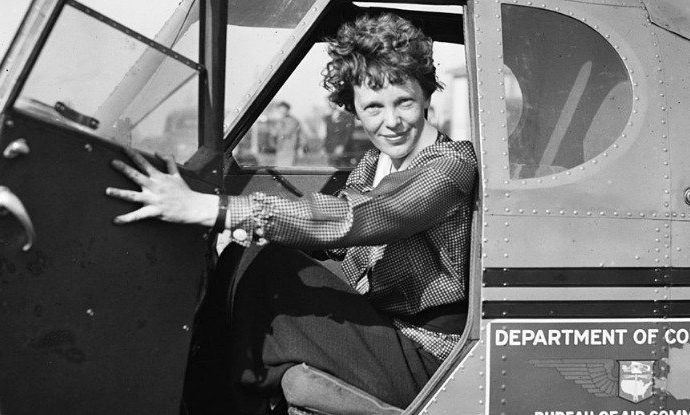Always label your bones, y’all.
Amelia Earhart, by far the most famous female aviator, has been inspiring adventurers since the 1930’s.
At the centre of this fascination is her mysterious disappearance while attempting to circumnavigate the globe with her co-pilot Fred Noonan in 1937.
So did the two survive and were captured by Japanese forces? Crashed and died at sea? Or did they make it to an island called Nikumaroro and died as castaways?
A new paper makes this third option seem the most likely – but as most things in science, the truth is a little more complicated.
Nikumaroro was considered uninhabited until 1938, lying roughly 563 kilometres (350 miles) southeast of Howland Island, which sits just north of the equator in the central Pacific Ocean.
“According to researchers from the International Group for Historic Aircraft Recovery (TIGHAR) – a group that’s been investigating Earhart’s disappearance for 25 years now – Nikumaroro Island is littered with artefacts that might have belonged to Earhart or Noonan,” Josh Hrala reported for ScienceAlert back in 2016.
“Some of these items include flight jacket buttons, a mirror, aluminium sheets, and even anti-freckle cream that some think Earhart might have kept with her. They also say that, based on sonar imagery, Earhart’s plane might lie off the island’s coast under 201 metres (660 feet) of ocean water.”
But what the TIGHAR team thought was the most intriguing piece of evidence is a skeleton that was found on the island back in 1940.
Upon initial investigation by a medical examiner called D. W. Hoodless, the bones were dismissed as nothing more than a castaway – who was most likely male.
This is at least partly due to a number of men being killed at Nikumaroro in a 1929 wreck – the island had seen a few human visitors, so it wasn’t surprising to find a man’s bones.
But the bones were lost, and the incident mostly forgotten.
Now, here’s where the news gets interesting – in the 1990’s the file was reopened, and using the original medical examiner’s notes, a new examiner said the bones were more likely female, and matched Earhart’s height.
Since then, a few scientists have been trying to more accurately confirm that the bones are definitely Earhart’s.
Back in 2016 when we first covered this research – forensic anthropologists Richard Jantz and Karen Burns found “the morphology of the recovered bones, insofar as we can tell by applying contemporary forensic methods to measurements taken at the time, appears consistent with a female of Earhart’s height and ethnic origin.”
At the time the research wasn’t peer-reviewed, but now Jantz has been published in the journal Forensic Anthropology, finding that the bone measurements have more similarity to Earhart than to 99 percent of individuals in a large reference sample.
So, case closed? Well, it’s important to note that no one has actually seen these bones for decades, and all of their analysis is on a file recorded in the 1940s.
We don’t have the bones to double check, and we have to take what we can get from an investigation from 80 years ago.
Basically, it’s looking good, but still complicated.
We’re probably never going to know definitively what happened to Amelia Earhart and Fred Noonan, but we’re sure that Earhart will continue to capture the public imagination for decades to come.
Let’s just try and remember to label all our bones, as you never know when they might be important.
Source: Science Alert

































Leave a Comment
You must be logged in to post a comment.